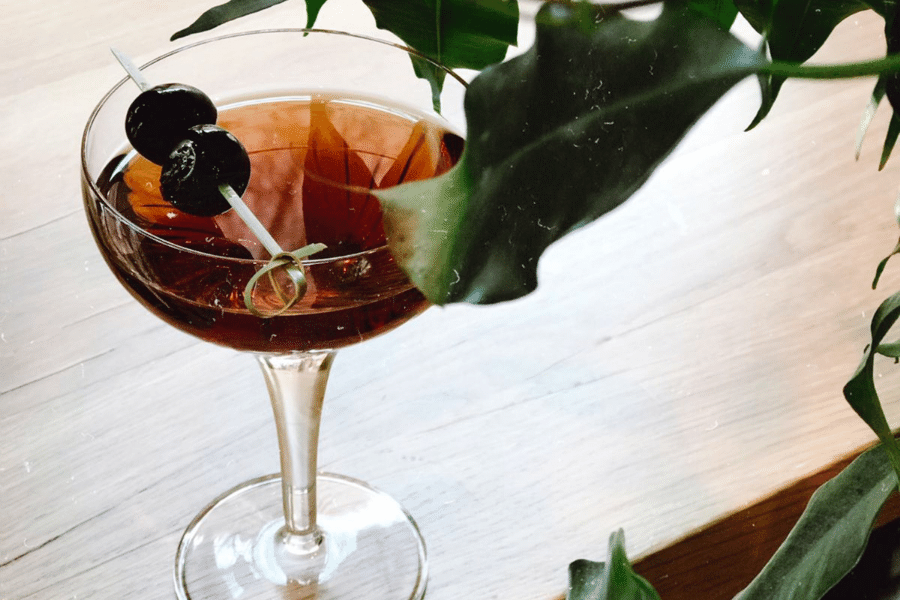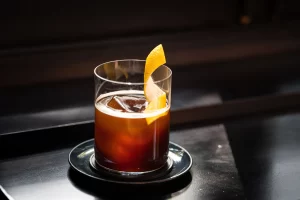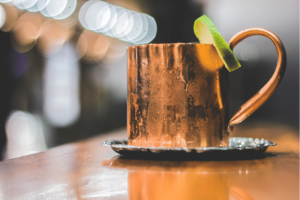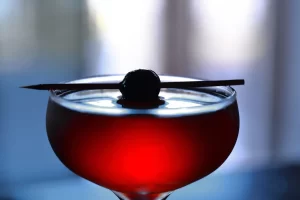Created and popularized in the early 1900s, the Affinity cocktail is an equal-parts, strong drink alive with scotch, sweet vermouth, and dry vermouth and seasoned with aromatic bitters. At-home variations occasionally use orange bitters, leaning into a floral seasoning to pair with the fruity notes found in scotch’s flavor profile.
Bar Tools
- BARSPOON
- JIGGER OR MEASURING CUP
- MIXING GLASS
- PEELER
- STRAINER
To serve: Coupe glass
Ingredients
- 1 OZ. SCOTCH (recommended: Monkey Shoulder Blended Scotch Whiskey)
- 1 OZ. SWEET VERMOUTH (recommended: Carpano Antica Formula Sweet Vermouth)
- 1 OZ. DRY VERMOUTH (recommended: Dolin Dry Vermouth)
- 2 DASHES AROMATIC BITTERS
To Garnish: Lemon twist and cherry
How to Make
Pour all ingredients in a mixing glass with ice and stir until well chilled. Strain into a coupe glass and serve with a twist of lemon and a cherry.
Nutrition Facts & ABV
- ABV (alcohol by volume): 20%
- Calories: 160
- Total carbohydrates: 7.6 grams
- Total sugar: 2.3 grams
History
The Affinity first appeared in the New York Sun in 1907, proclaiming “There’s another new cocktail on Broadway […] After drinking one, surviving experimenters declare, the horizon takes on a rosette hue.” The recipe in the Sun didn’t offer French (dry) vermouth in the recipe, containing a teaspoon of powdered sugar instead.
The addition of dry vermouth came in William T Boothby’s The World’s Drinks and How to Mix Them, published in 1908. But the recipe that holds true today looks like the one published in 1913 in Jacob A. Didier’s The Reminder Bartenders’ Vest Pocket Guide.
Earlier versions of the Affinity added a cherry alongside the twist of lemon, but modern versions don’t include it.
Affinity Cocktail FAQs
Can I use single islay scotch for the Affinity Cocktail?
Single islay scotch will have a tendency to overpower the flavors of the vermouth and bitters in this cocktail. For this reason, it’s recommended to stick to blended scotch unless you want a very strong peat flavor in your cocktail.






